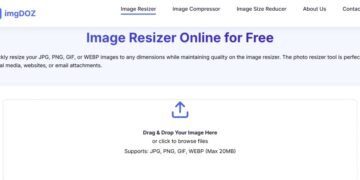QlikView is an easy-to-use BI tool used for integrating data, performing analytics, and extracting insights from raw data to form useful information. QlikView is a highly rated BI tool. We will look at everything about QlikView and its architecture.
QlikView Architecture components
QlikView’s architecture is an associative and logical type in the framework of the software. It is a Windows-based application that is compatible with both x64 and x86 architectures. QlikView’s architecture consists of three major components that are QlikView Desktop, QlikView Publisher, and QlikView Server. Now all of these components together help in designing, developing, and implementing the QlikView applications. If you are willing to break into the Analytics domain with QlikView Certification.
These QlikView components serve a different purpose for each category of users like IT professionals, End-users, Business Analysts, or Developers. So without further adieu, let’s get into more information on these components:
QlikView Desktop
The QlikView Desktop component is a Windows-based development tool developers use to create a QlikView application data model and GUI layout for applications. The developer here works on data and prepares it to use in the desktop environment where users could manipulate the data set using SQL-like scripting.
You can also watch this video to get a better insight.
QlikView Server (QVS)
The applications that are created in QlikView Desktop are hosted in QlikView Server (QVS) to help users access and use them whenever they require. This QlikView Server always maintains communication between server and end-users (or clients). The QVS is also known as a server-side application and offers data files to front-end users from the back-end.
QlikView Publisher
QlikView Publisher (QVP) also works server-side and fetches data from data sources like data files that are standard, Salesforce, SAP NetWeaver, etc., and loads that directly into QlikView files. If you want to build salesforce forms without coding you can check this Salesforce form builder.
QlikView Management Console
QlikView Management Console is an IT management platform that chiefly handles all the other QlikView components. This server-side application has a web-based interface. It is controlled by IT professionals.
QlikView User Access
At the front-end, an end-user can access QlikView through the portal to access and manipulate data files in the QlikView. These portals are nothing but web browsers that can open through mobile, laptop, desktop, etc. To know more about QlikView and its architecture, you can check out the QlikView tutorial.
QlikView Architecture
The architecture of QlikView is designed for ensuring the best performance in enterprise management, scalability and to offer a secure environment for working. The best thing about QlikView architecture is the associative model and the in-memory storage facilities that make it dynamic in functioning.
Working of QlikView:
We can better understand the QlikView’s architecture by understanding the three ends of QlikView:
Data Source End:
This fundamental layer is the data access point and is called the infrastructure resource. It is also known as the Extract layer in the ETL (Extract, Transform, and Load) process.
Back End:
Here, developers create documents and hold the source documents. It is also called an application platform. Windows File Systems authorizes and access permission from various data sources.
Front End:
It is a presentation layer in the browser platforms that apps use to visualize documents that have been sent to it by the back-end publisher or server.
The importance of QlikView architecture
QlikView has been a functionally efficient tool that businesses could rely upon for business analysis and exploration. QlikView offers extensive hindsight to analysts about the business. A user can plug in large amounts of data from different data sources without any form of restriction. They can also share the insights and the reports with other analysts and other members of the organization.










